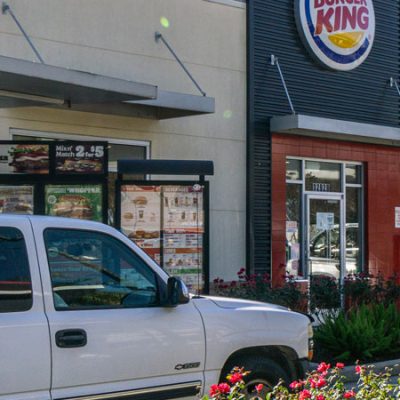Drive-thrus also played an important role in fast casual restaurants’ survival.
By Ted Knutson | June 14, 2021 at 06:58 AM
Focus on localities when you look at the recovery of fast casual restaurants from the pandemic, urges the NPD Group in a new report.
“I often get the question, when will the US restaurant industry improve, and part of the answer is one market at a time,” says David Portalatin, NPD food industry advisor and author of Eating Patterns in America. “My advice to restaurant operators, foodservice distributors, and manufacturers is to have a national view but act locally.”
For example, restaurant chain customer transaction declines in the Dallas-Fort Worth designated market area improved from double-digit declines last year to -4% in May 2021 compared to May 2019, a pre-pandemic basis of comparison.
In addition to the DFW market, other top market areas showing improvements in restaurant chain customer transaction declines in May are Atlanta, GA.; Birmingham, Alabama; Salt Lake City, Utah; and Orlando, Florida.
Important factors in the recovery of all these markets are restaurant restrictions that had been eased or lifted as of May, and fast casual chain customer transactions grew.
The report points out fast casual restaurants didn’t do as well as traditional quick service restaurants because the quick servs were well-equipped before the pandemic to handle off-premises operations, like carry-out, delivery, and drive-thru. Most fast casual chains, which relied more heavily on dine-in and didn’t have drive-thru operations, were not, NPD explains. “As fast casual chains quickly pivoted to focus on off-premises operations and restrictions were eased, their situation improved,” the report says.
In May 2021, total US fast casual chain customer transactions increased by +2% compared to May 2019, and customer transactions grew over the May 2019 levels in 30 of the top 50 markets. Total US restaurant chain customer transactions across all segments declined by -9% in May 2021 compared to May 2019.
Drive-thrus were big aids to the restaurants that had them during the pandemic, NPD said in an earlier report because the feature eased carry out and customers were accustomed to getting food at these outlets this way.
Trips to the drive-thru represented 42% of all restaurant visits in the second quarter of 2020, the research firm noted. The share was up 26% for the quarter.
“Drive-thru operations are delivering a high ROI during the pandemic, offering convenience, speed, and the comfort of social distance to consumers using them,” said Portalatin in the earlier study.
The Hanley Investment Group said drive-thrus were among the winners in the pandemic.
“When the global pandemic hit, the drive-thru became a critical sales channel for preserving store revenue and it has continued to be extremely effective for the chains and time-starved consumers Furthermore, even if indoor seating is allowed, some consumers are still favoring drive-thru lanes as a safer and more convenient option. This consumer shift has caused chains to reexamine their footprint and use of technology and efficiency,” Hanley President Ed Hanley told GlobeSt.com in an earlier interview.

